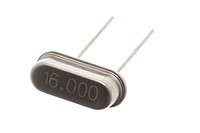
Photo from wikipedia
Objective: Early control of blood pressure is critical to delaying the progression of chronic kidney disease (CKD) and preventing future cardiovascular events and mortality. The primary objective of the study… Click to show full abstract
Objective: Early control of blood pressure is critical to delaying the progression of chronic kidney disease (CKD) and preventing future cardiovascular events and mortality. The primary objective of the study is to assess the optimal cut-off points of blood pressure components for predicting the worsening of proteinuria or renal function. Design and method: Retrospective longitudinal data from 2013–2017 specific health surveys among participants of National Health Insurance in Toyooka City were analyzed (n = 5,169 at baseline). Association of blood pressure at baseline and worsening of dip-stick proteinuria or estimated glomerular filtration rate (eGFR) during follow-up were determined with Cox proportional hazard analysis. The optimal cut-off points were determined with time-dependent receiver operating characteristic curves (ROC). Results: Survival analysis revealed that worsening of proteinuria during follow-up was significantly associated with baseline systolic and diastolic blood pressure levels independently of age, gender, or HbA1c levels. Time-dependent ROC curves for detecting worsening of proteinuria during follow-up revealed that the optimal cut-off points of systolic and diastolic blood pressure were 126 mmHg (sensitivity 0.62, specificity 0.45) and 81 mmHg (sensitivity 0.38, specificity 0.70), respectively. When the whole population was categorized with the systolic blood pressure levels of < 126, 126–139, or > = 140 mmHg, the age, gender, and HbA1c-adjusted risks for worsening proteinuria in the highest and intermediate systolic blood pressure groups were 1.5-fold (p = 0.002) and 1.3-fold (p = 0.014) higher than that in the lowest group, respectively. In addition, the risks for more than a 15%-decrease in eGFR during follow-up in the highest and intermediate groups were 2.0-fold (p < 0.001) and 1.6-fold (p = 0.009) higher than that in the lowest group, respectively. When the whole population was categorized with the diastolic blood pressure levels of < 81, 81–89, or > = 90 mmHg, the risks for worsening proteinuria in the highest and intermediate diastolic blood pressure groups were 1.5-fold (p = 0.004) and 1.2-fold (p = 0.056) higher than that in the lowest group, respectively. Furthermore, the time-dependent ROC curve for detecting more than a 15%-decrease in eGFR during follow-up revealed that the optimal cut-off point of pulse pressure was 52 mmHg (sensitivity 0.48, specificity 0.58). In subjects with a baseline pulse pressure of > = 52 mmHg, the adjusted odds ratio for detecting more than a 15%-decrease in eGFR during follow-up was 1.5-fold higher than in those with a baseline pulse pressure of < 52 mmHg (p = 0.005). Conclusions: Data from specific health surveys revealed regional blood pressure-related risks associated with worsening of CKD among participants of National Health Insurance.
Journal Title: Journal of Hypertension
Year Published: 2023
Link to full text (if available)
Share on Social Media: Sign Up to like & get
recommendations!